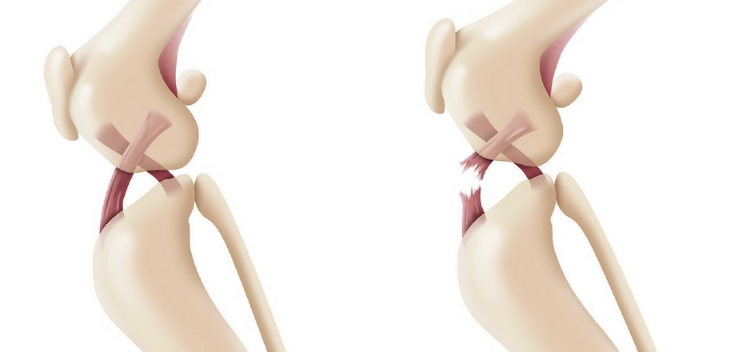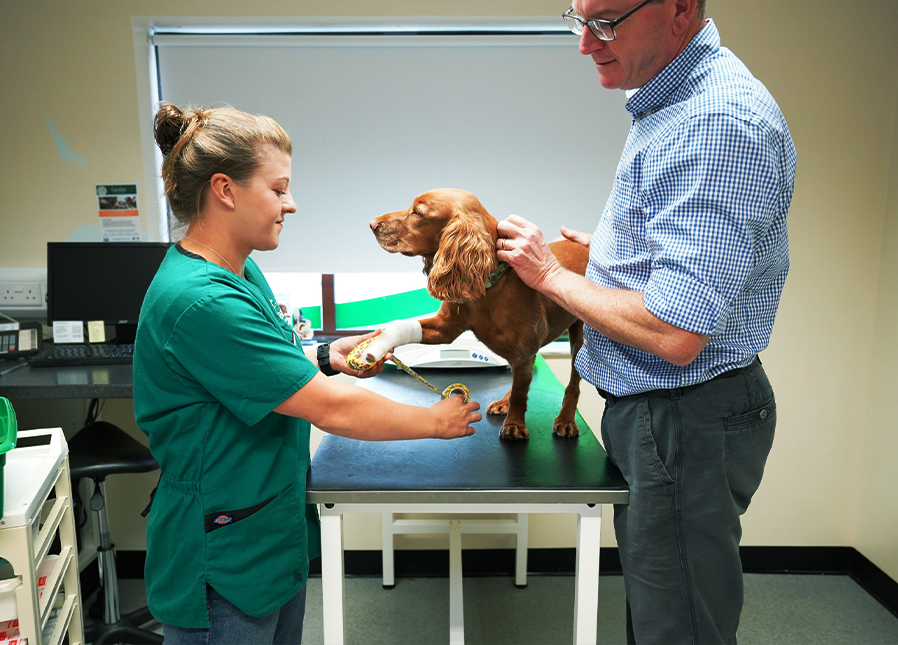
Cranial Cruciate Tears
Cranial cruciate tears are a common cause of hindlimb lameness in dogs. The problem can range from acute, showing a sudden severe lameness, through to chronic, with a gradual decline in normal use of the leg.
Contact us about this procedure
Crucial ligament tear procedures at Garston Vets
What is the Cruciate ligament?
There are 2 cruciate ligaments in each knee joint. The cranial cruciate ligament is a band of tough fibrous tissue joining the femur to the tibia (the thigh bone and shin bone). It’s role is to prevent the shin bone from moving forward relative to the thigh bone, as well as providing stability against rotation or over-extension.
How do the ligaments become damaged?
In the vast majority of dogs, the cranial cruciate ligament ruptures as a result of long-term degeneration, whereby the fibres within the ligament weaken over time, like a fraying rope. Acute injuries to the ligament can also occur through twisting the knee, for example when jumping or turning when running.
How is a cruciate ligament injury assessed by the vet?
The vet will take a complete history and perform a full clinical exam to localise the source of pain your dog is feeling. They will manipulate the joint in different ways to assess all the ligaments of the knee, and will tell you if they identify a specific issue with the cruciate ligament.
X-rays are performed to assess for any other joint related changes, for example arthritis, and to look for the key characteristics of cruciate ligament rupture.
How is cruciate ligament injury treated?
Non-surgical management
For mild cases conservative management including rest and non-steroidal anti-inflammatory medications may benefit your dog, however more often than not surgical intervention is required.
Surgical management
We perform two different types of cruciate surgery to aid the stability of the knee joint:
1. The lateral suture technique involves a fiberwire artificial ligament anchored to the femur and through the tibia to mimic the action of the original cruciate ligament. This is used most commonly in small dogs.
2. The TTA Rapide (Tibial Tuberosity Advancement) involves placing a titanium wedge into a precise cut into the tibia, moving it into a new position. This alters the geometry of the knee so that it no longer needs a cruciate ligament.
Many factors influence the most suitable treatment option for your dog, including breed, size, age and activity levels. The vet will discuss all of the above with you and advise on the best course of action to get them back to full health.
Cranial Cruciate Tear procedures are performed at our Warminster surgery.

